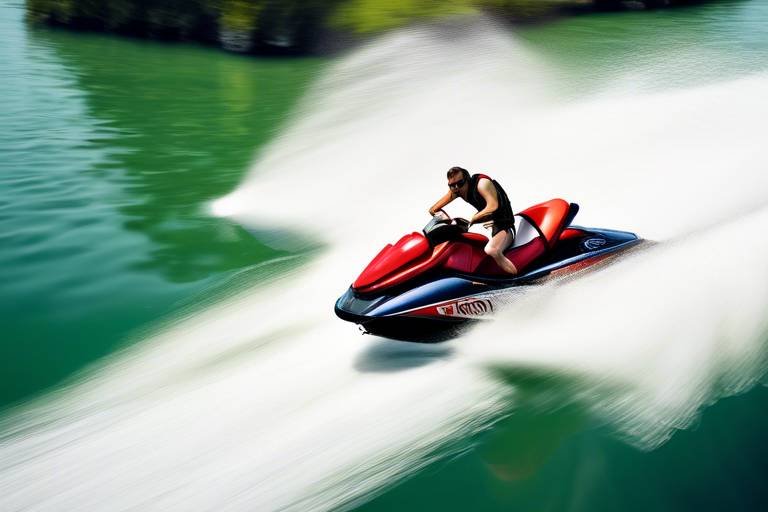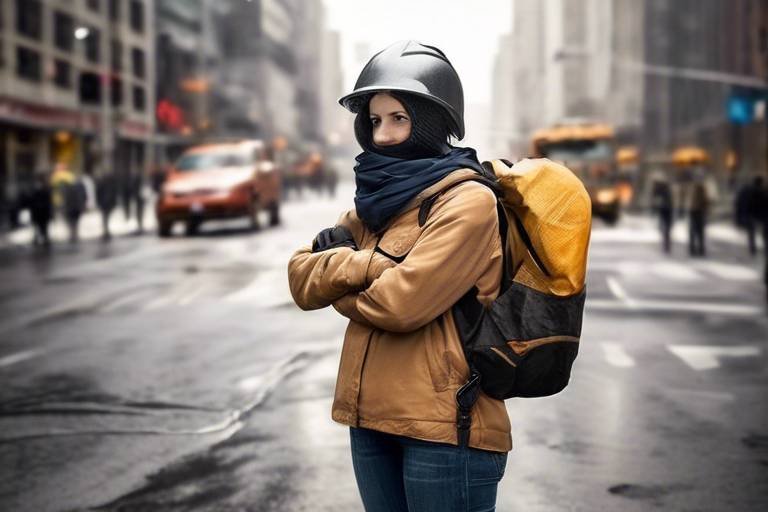Safety Tips for Wildlife Photographers
Embarking on a wildlife photography adventure is like stepping into a world where every moment is a story waiting to unfold. However, amidst the thrill of capturing breathtaking shots, ensuring your safety is paramount. This article provides essential safety tips for wildlife photographers to ensure a secure and enjoyable photography experience while respecting both nature and wildlife. Whether you're a seasoned pro or just starting out, these tips will help you navigate the wild with confidence and respect.
Knowing animal behavior is crucial for photographers. Imagine you're in the wild, camera in hand, and suddenly you spot a majestic bear. How do you react? Understanding the signs of stress or aggression in wildlife can be the difference between a memorable photo and a dangerous encounter. Animals communicate through body language; for instance, a raised hackle or a sudden freeze can indicate that an animal feels threatened. By learning these cues, you can avoid putting yourself in harm's way and ensure a respectful distance from the wildlife you are photographing.
The right equipment can enhance safety and efficiency. Think of your gear as your shield in the wild. It's not just about capturing stunning images; it's also about protecting yourself. Essential gear for wildlife photography includes not only your camera and lenses but also protective clothing and accessories that can safeguard you against the elements and potential wildlife threats. For example, wearing durable, weather-resistant clothing can keep you dry and comfortable, while also providing a layer of protection against unexpected encounters.
Wearing appropriate clothing is vital for safety. Imagine trudging through a dense forest in a light t-shirt and shorts; not only are you vulnerable to the elements, but you also risk scratches and insect bites. Opt for clothing made from moisture-wicking, breathable fabrics, and consider layers that can be added or removed based on the weather. Additionally, long sleeves and pants can protect you from sunburn and insects. Here’s a quick overview of recommended materials:
| Material | Benefits |
|---|---|
| Moisture-wicking fabric | Keeps you dry and comfortable |
| UV-protective clothing | Protects against sunburn |
| Durable, heavy-duty fabric | Offers protection against thorns and bites |
Choosing the right footwear can prevent accidents. Have you ever tried hiking through uneven terrain in flip-flops? It’s a recipe for disaster! Sturdy, comfortable shoes are essential for navigating various landscapes. Look for boots with good ankle support and non-slip soles to help you maintain your footing on slippery surfaces. Remember, your feet are your foundation in the wild, so invest in quality footwear that can withstand the elements.
Using specific accessories can enhance safety. Your camera gear is an investment, and protecting it should be a priority. Consider using padded camera bags that can withstand bumps and drops. Additionally, lens filters can protect your lenses from scratches and dirt. A sturdy tripod not only helps stabilize your shots but can also serve as a walking stick in tricky terrains. By equipping yourself with the right accessories, you can focus on capturing stunning wildlife images without worrying about your gear.
Being prepared for emergencies is essential. Picture this: you’re deep in the woods, and suddenly the weather takes a turn for the worse. Are you prepared? Having a plan in place can make all the difference. Always carry a first aid kit, a map, and a compass, even if you have GPS. Familiarize yourself with the area you’ll be photographing and let someone know your itinerary. Additionally, consider taking a wilderness survival course to equip yourself with skills that could be invaluable during an unexpected situation.
Understanding the importance of wildlife conservation is key. As a wildlife photographer, you have a unique opportunity to advocate for nature through your lens. However, with this privilege comes ethical responsibilities. Always prioritize the well-being of the animals and their habitats. This means not only capturing stunning images but also ensuring that your presence does not disturb their natural behaviors.
Maintaining a safe distance from animals is critical. Have you ever seen a photographer too close to a wild animal, risking their safety for a shot? It's essential to know the recommended distances to avoid disturbing wildlife while capturing stunning images. Generally, a distance of at least 100 yards is advisable for larger animals, while smaller creatures may require even more space. Use a telephoto lens to get those close-up shots without compromising your safety or the animals' comfort.
Photographers can lessen their ecological footprint. Every step you take in the wild can impact the environment. To minimize your impact, stick to established trails, avoid trampling on delicate vegetation, and never disturb nesting sites. Carry out what you carry in, and consider using eco-friendly products. By practicing these best practices, you contribute to the preservation of the beautiful landscapes and wildlife you cherish.
- What should I do if I encounter a wild animal? Stay calm, back away slowly, and give the animal space.
- How can I protect my camera gear in adverse weather? Use weather-sealed gear and carry protective covers.
- What is the best time of day for wildlife photography? Early morning and late afternoon offer the best light and animal activity.
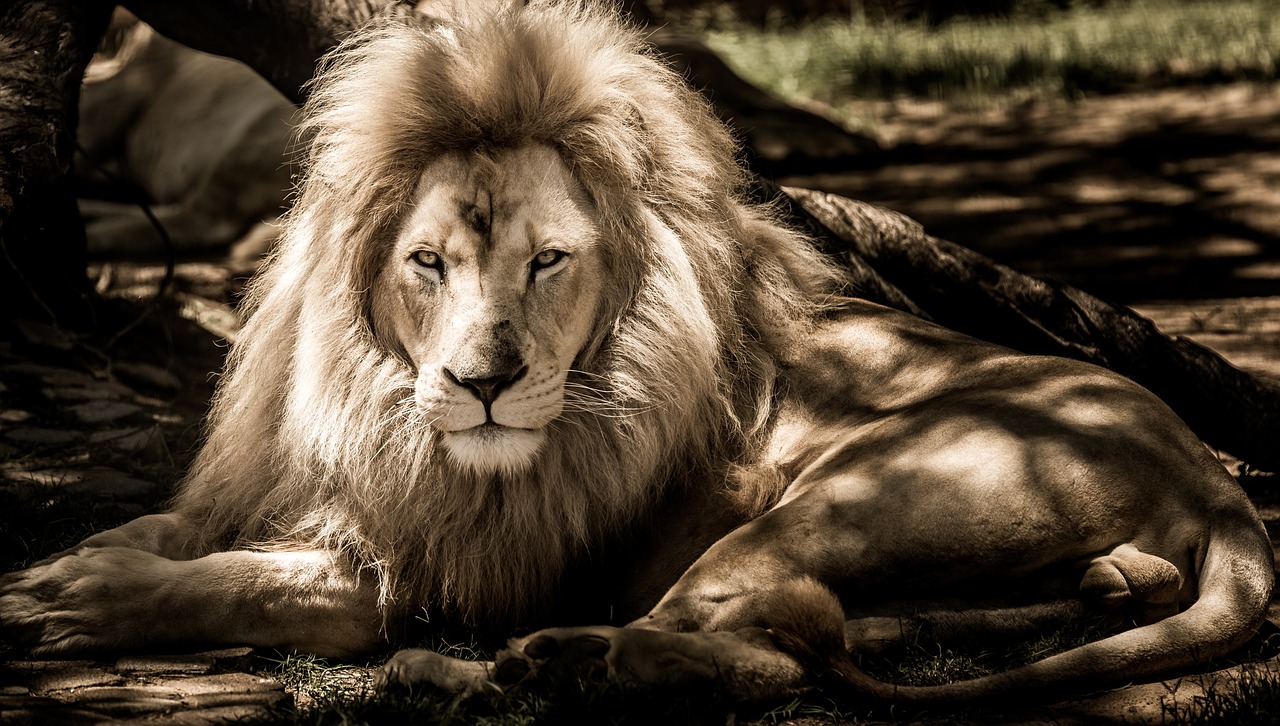
Understanding Wildlife Behavior
When it comes to wildlife photography, understanding animal behavior is not just a nice-to-have; it’s a critical skill that can mean the difference between a successful shoot and a dangerous encounter. Wildlife is unpredictable, and each species has its own unique set of behaviors that can signal stress or aggression. For instance, if you see an animal flicking its ears or stamping its feet, it might be feeling threatened. By learning to read these signs, you can better position yourself to capture stunning images while keeping both yourself and the animals safe.
Imagine you’re out in the wild, camera in hand, ready to capture that breathtaking moment when a majestic stag steps into the clearing. But wait! If the stag is pawing the ground or snorting, it’s a clear indication that it feels cornered or agitated. These subtle cues are nature’s way of communicating, and ignoring them can lead to dangerous situations. Always remember, wildlife is not a backdrop for your photography; it’s a living, breathing entity that deserves respect.
Moreover, different species exhibit varying behaviors during different times of the day. For example, many animals are crepuscular, meaning they are most active during dawn and dusk. This is when you’ll find them foraging for food or engaging in mating rituals. Understanding these patterns can greatly enhance your chances of capturing that perfect shot. Make sure to research the species you're interested in photographing, as this knowledge will arm you with the confidence to approach them safely.
Here are a few key behaviors to watch for:
- Body Language: Animals communicate a lot through their posture. A relaxed animal will appear calm, while one that is tense or hunched may be feeling threatened.
- Vocalizations: Sounds can indicate various emotions. A growl might mean warning, while chirps or whistles can indicate curiosity or interest.
- Eye Contact: Direct eye contact from an animal can be a sign of aggression. It’s often best to avoid staring directly at them.
Understanding these behaviors not only helps in keeping you safe but also enhances your ability to capture authentic moments. It’s like having a secret weapon in your photography arsenal. So, the next time you’re out in the field, take a moment to observe before you click. Your patience will pay off in the form of stunning images that truly encapsulate the spirit of wildlife.
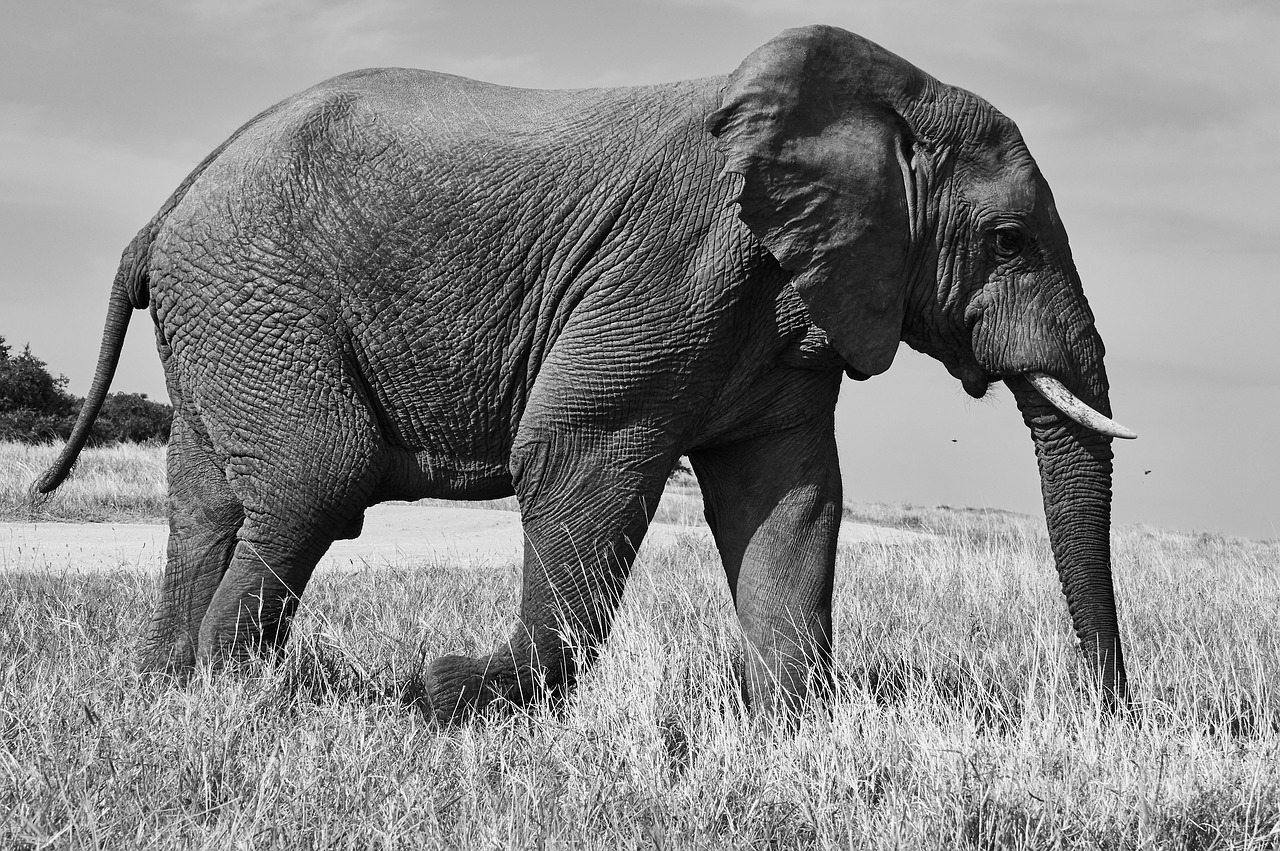
Choosing the Right Gear
When it comes to wildlife photography, the right gear can make all the difference between a successful shoot and a frustrating experience. Imagine heading out into the wild, excitement bubbling within you, only to find that you're ill-equipped to handle the challenges that nature throws your way. It's like trying to catch a fish without a fishing rod! To avoid such scenarios, let's dive into the essential equipment that every wildlife photographer should consider.
Your choice of gear not only affects your ability to capture stunning images but also plays a crucial role in ensuring your safety. For instance, having the right protective clothing can shield you from the elements, while the appropriate camera accessories can keep your equipment secure. It’s essential to think of your gear as your companion in the wild—one that should enhance your experience rather than hinder it.
First and foremost, let's talk about protective clothing. This isn't just about looking good; it's about being prepared for whatever nature throws at you. Consider wearing materials that are breathable yet durable, allowing you to move freely while protecting you from the sun, wind, and even insects. Fabrics like nylon and polyester are great choices because they dry quickly and offer some level of water resistance. Furthermore, you might want to invest in clothing with built-in UV protection to shield your skin from harmful rays.
Now, let’s not forget about your feet! The right footwear can be the difference between a smooth trek through the wilderness and a painful ordeal. Opt for sturdy, comfortable shoes that provide good traction. Think of your shoes as the foundation of your adventure; if they falter, so might your entire experience. Hiking boots or shoes designed specifically for rugged terrains are excellent choices. They not only protect your feet but also support your ankles, which is crucial when navigating uneven ground.
Alongside your clothing, having the right camera safety accessories is vital. A reliable camera bag is your first line of defense against the elements. Look for one that is waterproof and has padded compartments to protect your gear from bumps and drops. Additionally, consider using lens filters; they can help protect your lenses from scratches and harsh weather conditions. A sturdy tripod is also essential, as it stabilizes your shots, especially in low-light conditions, and can double as a walking stick in tricky terrains.
In summary, choosing the right gear for wildlife photography goes beyond just picking a camera and a lens. It's about creating a comprehensive kit that ensures your safety and enhances your ability to capture the beauty of nature. So, gear up wisely, and you'll be well on your way to creating stunning wildlife images while keeping yourself safe!
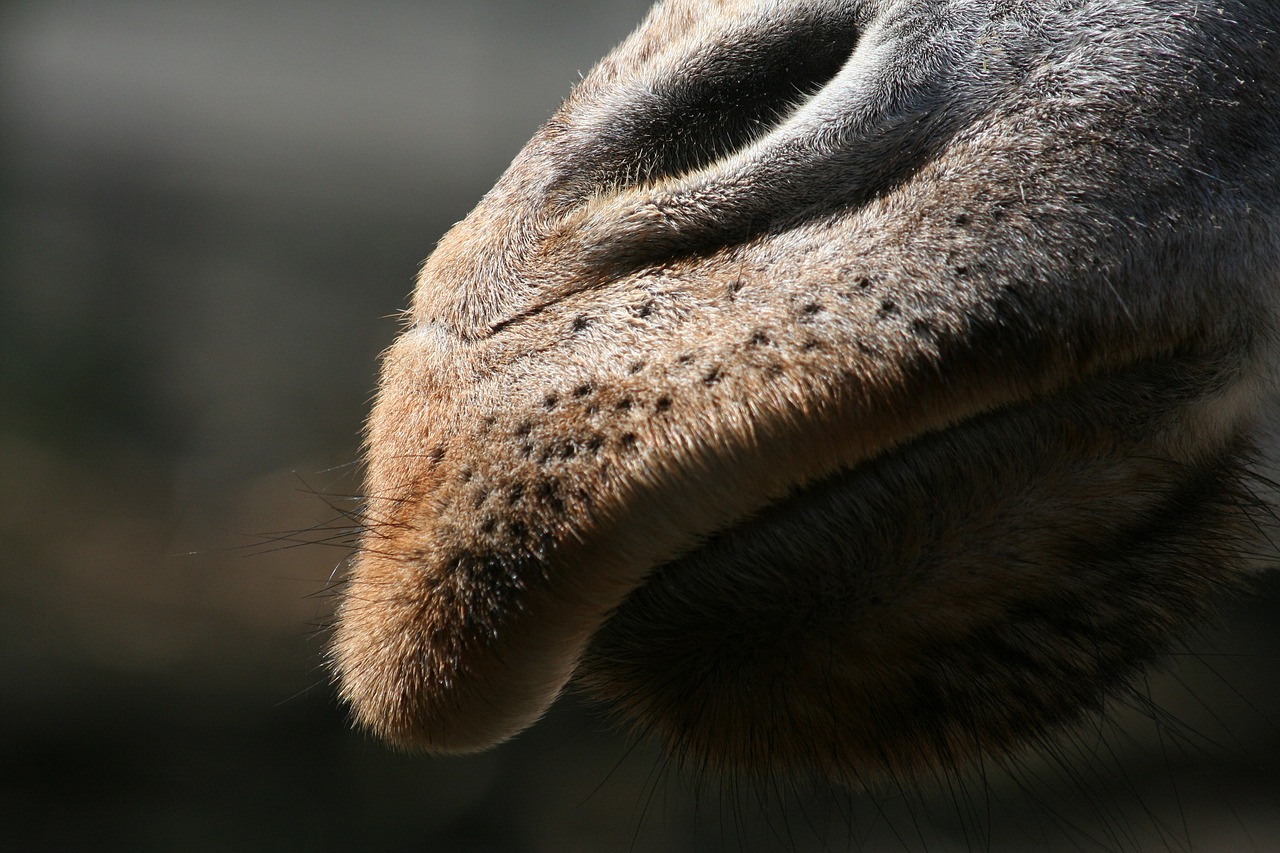
Protective Clothing
When it comes to wildlife photography, the right can be your best friend. Imagine stepping into the wild, camera in hand, ready to capture breathtaking moments, but suddenly, you find yourself battling the elements or, worse, an unexpected encounter with wildlife. This is where your choice of clothing becomes crucial. It’s not just about looking good; it’s about staying safe and comfortable while you work to capture nature’s beauty.
First and foremost, your clothing should be made from materials that are both durable and weather-resistant. Fabrics like nylon and polyester are excellent choices because they are lightweight, quick-drying, and can withstand the rigors of outdoor adventures. Additionally, consider clothing with moisture-wicking properties to keep you dry during those long hours in the field. Nobody wants to be distracted by discomfort when they’re trying to get that perfect shot!
Another essential aspect of protective clothing is the layering system. Think of it as your personal armor against the unpredictable nature of the wilderness. Start with a good base layer that fits snugly against your skin. This layer should be breathable to help regulate your body temperature. On top of that, a mid-layer, like a fleece jacket, provides insulation, while an outer layer, such as a waterproof jacket, shields you from rain and wind. This combination allows you to adapt to changing weather conditions effortlessly.
But let’s not forget about the importance of camouflage. Wearing clothing that blends into the environment can significantly enhance your ability to approach wildlife without alarming them. Choose earthy tones like greens, browns, and grays, which help you remain inconspicuous. It’s like becoming a part of the landscape, allowing you to get closer to your subjects without scaring them away.
Moreover, protective clothing should also include features that enhance your experience. Look for pants with multiple pockets to store your essentials, like memory cards, filters, or even snacks for those long shoots. Some photographers swear by cargo pants with zip-off legs, transforming them into shorts when the temperature rises. It’s all about versatility!
Lastly, don’t underestimate the importance of sun protection. If you’re out in the open for extended periods, a wide-brimmed hat and long sleeves can shield you from harmful UV rays. Remember, protecting your skin is just as crucial as safeguarding your gear. After all, you want to enjoy your photography adventures for years to come, right?
In summary, the right protective clothing not only enhances your safety but also boosts your comfort and efficiency in the field. By investing in quality gear that suits your environment and needs, you can focus more on capturing stunning wildlife images rather than worrying about the elements. So gear up, stay safe, and let your creativity flow!
- What materials are best for protective clothing in wildlife photography? Look for durable, weather-resistant fabrics like nylon and polyester that are also breathable and moisture-wicking.
- Why is layering important? Layering allows you to adapt to changing weather conditions, keeping you comfortable and protected.
- How can I camouflage myself while photographing wildlife? Choose clothing in earthy tones to blend into the environment, which helps you get closer to animals without alarming them.
- What accessories should I consider for sun protection? A wide-brimmed hat and long-sleeved shirts are great for shielding yourself from harmful UV rays.
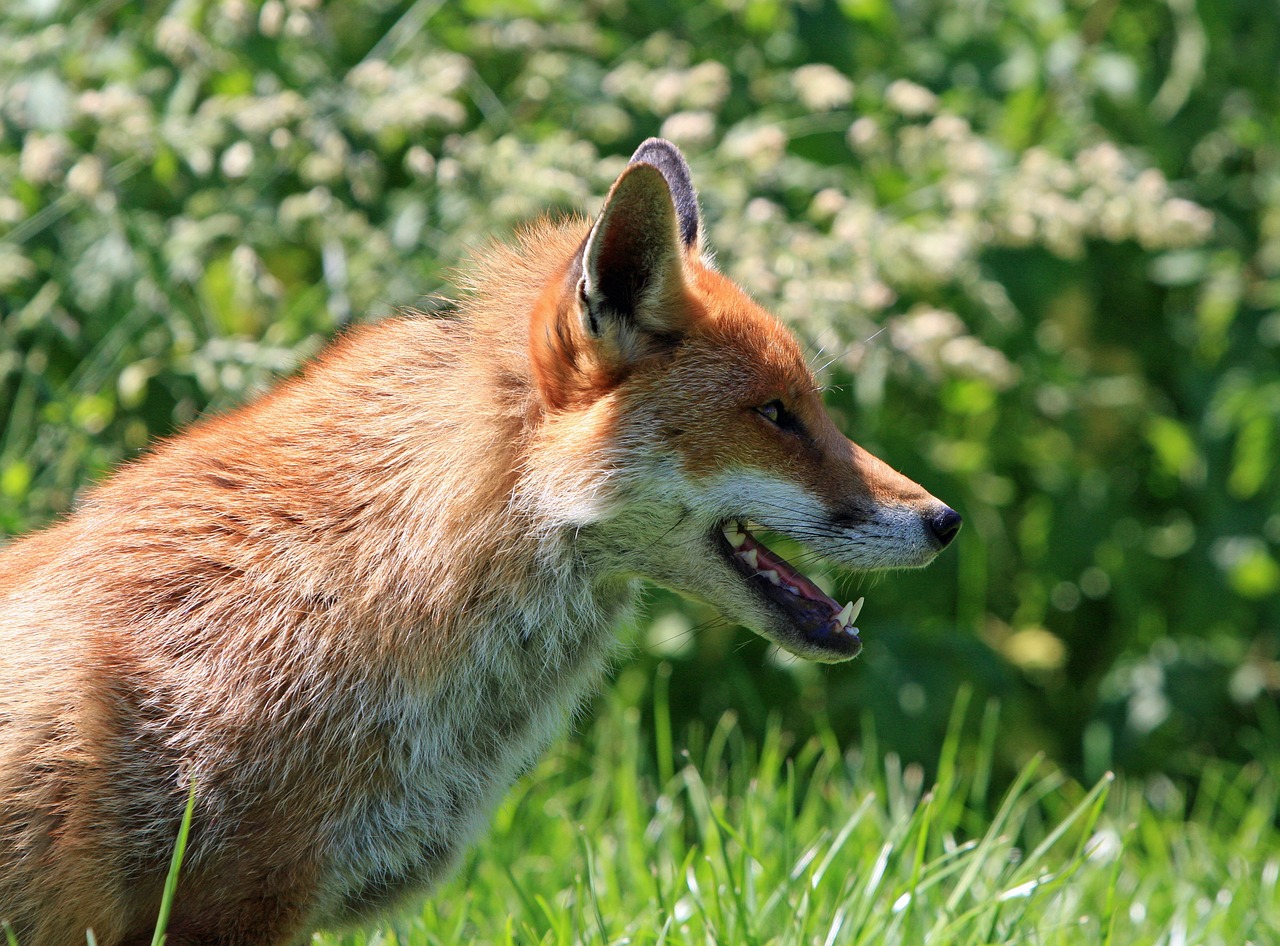
Footwear Considerations
When it comes to wildlife photography, the right footwear can make a world of difference. Imagine yourself trekking through dense forests or wading through marshy wetlands, where every step could either lead you closer to a breathtaking shot or put you at risk of slipping and falling. Choosing the right shoes is not just about comfort; it's about ensuring your safety and allowing you to focus on capturing those stunning images without worrying about your footing.
First and foremost, you need to consider the terrain you'll be navigating. Different environments demand different types of footwear. For instance, if you're planning to explore rocky landscapes, a sturdy pair of hiking boots with good ankle support is essential. These boots not only provide stability but also protect your feet from sharp rocks and uneven ground. On the other hand, if your photography adventure takes you to wetlands or muddy areas, waterproof boots are a must. They will keep your feet dry and comfortable, allowing you to move freely without the fear of soggy socks ruining your day.
Additionally, breathability is an important factor. Spending hours outdoors can lead to sweaty feet, which can be uncomfortable and even lead to blisters. Look for footwear made from breathable materials that allow air circulation. This will help keep your feet cool and dry, especially during those long hours of waiting for the perfect shot. Consider footwear with moisture-wicking properties, which can be a game changer in hot or humid climates.
Another critical aspect to consider is the traction of your footwear. Wildlife photographers often find themselves in unpredictable environments, and a slip could lead to serious injuries or missed opportunities. Shoes with a good grip can help you maintain your balance on slippery surfaces, whether you're on wet grass or rocky paths. It’s worth investing in shoes that feature advanced traction technology designed for outdoor activities.
Finally, don’t forget about the importance of fit. Ill-fitting shoes can lead to discomfort and distractions, which are the last things you want when you're trying to capture the perfect moment. Always try on shoes with the socks you plan to wear, and ensure there’s enough room for your toes to move without being cramped. A good rule of thumb is to have about a thumb's width of space between your longest toe and the end of the shoe.
In summary, when selecting footwear for wildlife photography, keep the following considerations in mind:
- Terrain: Choose shoes that are appropriate for the environment.
- Waterproofing: Opt for waterproof options in wet conditions.
- Breathability: Look for materials that allow airflow.
- Traction: Ensure your shoes have good grip to prevent slips.
- Fit: Make sure your shoes fit well to avoid discomfort.
By paying attention to these footwear considerations, you'll be well-equipped to tackle any situation that comes your way while photographing wildlife. So lace up those boots and get ready for an adventure that’s as safe as it is exhilarating!
Q: What type of footwear is best for wet environments?
A: Waterproof boots with good traction are ideal for wet environments to keep your feet dry and prevent slipping.
Q: How important is the fit of my shoes?
A: Proper fit is crucial; ill-fitting shoes can cause discomfort and distract you from your photography.
Q: Should I wear thick socks with my shoes?
A: Yes, wearing the socks you plan to use when trying on shoes is recommended to ensure a proper fit.
Q: Can I use regular sneakers for wildlife photography?
A: While regular sneakers may be comfortable, they often lack the necessary support, traction, and waterproofing for more demanding terrains.
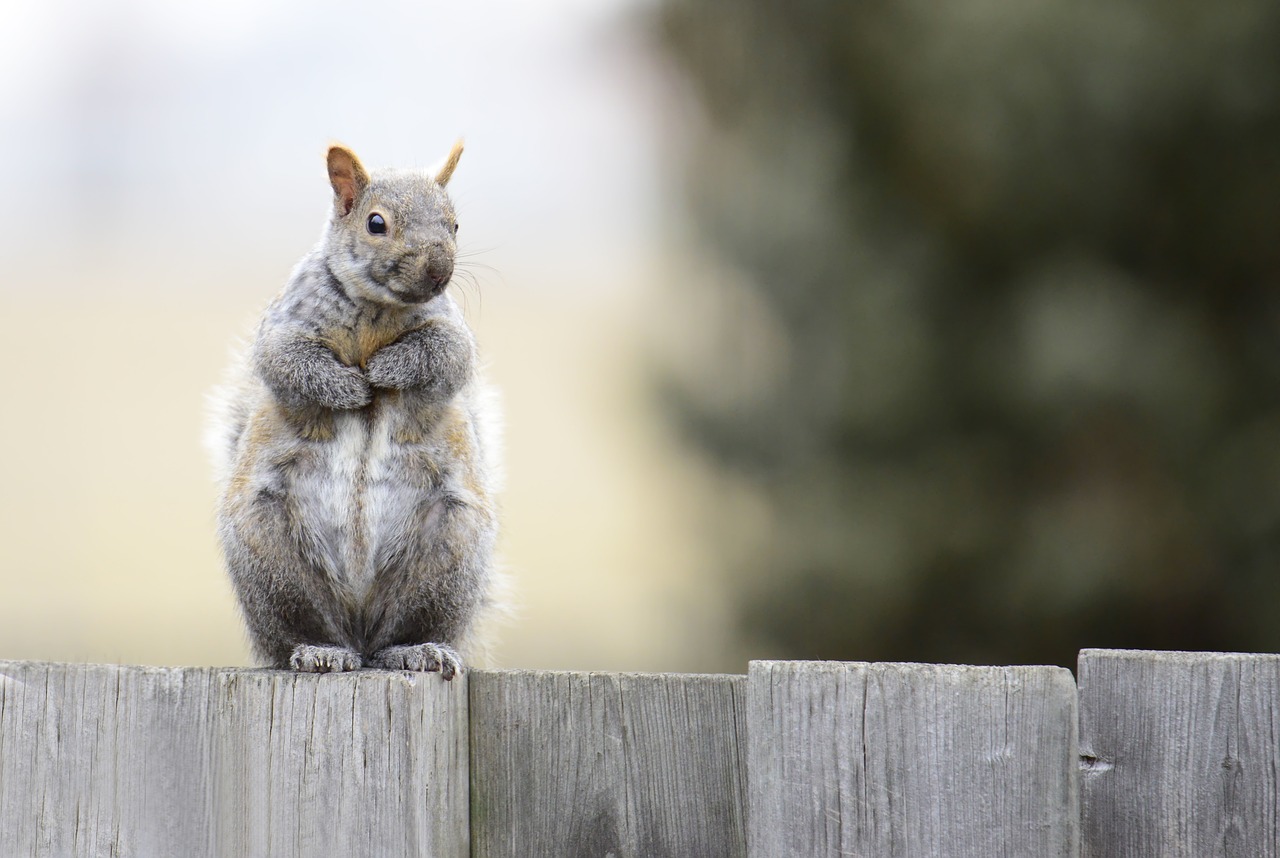
Camera Safety Accessories
When you’re out in the wild, capturing the perfect shot, the last thing you want is to worry about your gear. That’s where come into play. These tools not only protect your equipment but also enhance your overall safety while navigating unpredictable environments. Think of them as your trusty sidekicks in the great adventure of wildlife photography!
First and foremost, a quality camera strap is essential. Opt for a strap that distributes weight evenly across your shoulder and neck. This not only prevents fatigue during long hours of shooting but also secures your camera against accidental drops. Some photographers prefer straps with quick-release features, allowing for rapid access while ensuring the camera stays tethered safely.
Another must-have is a weatherproof camera bag. Weather can be unpredictable, especially in natural habitats. A durable, waterproof bag will protect your gear from rain, dust, and accidental spills. Look for bags with padded compartments to keep your camera and lenses safe from bumps and drops. Additionally, consider bags with modular systems, allowing you to customize your setup based on the specific shoot.
Don’t forget about lens filters. Not only do they help in improving image quality, but they also provide a layer of protection for your valuable lenses. UV filters can shield your lens from scratches and dirt, while polarizing filters can reduce glare and enhance colors. Just imagine capturing that vibrant sunset without the annoying reflections—pure magic!
For those long treks into the wilderness, a tripod is indispensable. However, not just any tripod will do. Look for lightweight yet sturdy options that can withstand wind and uneven terrain. Some tripods even come with stabilizers or spikes for added grip on slippery surfaces. You wouldn’t want your camera tumbling down a hill because of a flimsy tripod, right?
Lastly, consider investing in protective lens caps and camera covers. These accessories may seem small but can save you a lot of hassle. Lens caps prevent dust and scratches when your camera is not in use, while camera covers can shield your gear from rain and snow. Think of them as the protective armor your camera needs to brave the elements.
In summary, having the right camera safety accessories can significantly enhance your wildlife photography experience. They not only protect your gear but also allow you to focus on what truly matters—capturing those breathtaking moments in nature. So, gear up and prepare for your next adventure!
- What are the essential camera safety accessories I should have?
A good camera strap, weatherproof bag, lens filters, a sturdy tripod, and protective lens caps are essential accessories. - How can I protect my camera in wet conditions?
Use a weatherproof camera bag and consider camera covers to shield your gear from rain. - Do I really need a tripod for wildlife photography?
Yes, a sturdy tripod helps stabilize your camera, especially for long exposures or in windy conditions. - What type of camera strap is best?
Look for straps that distribute weight evenly and have quick-release features for easy access.
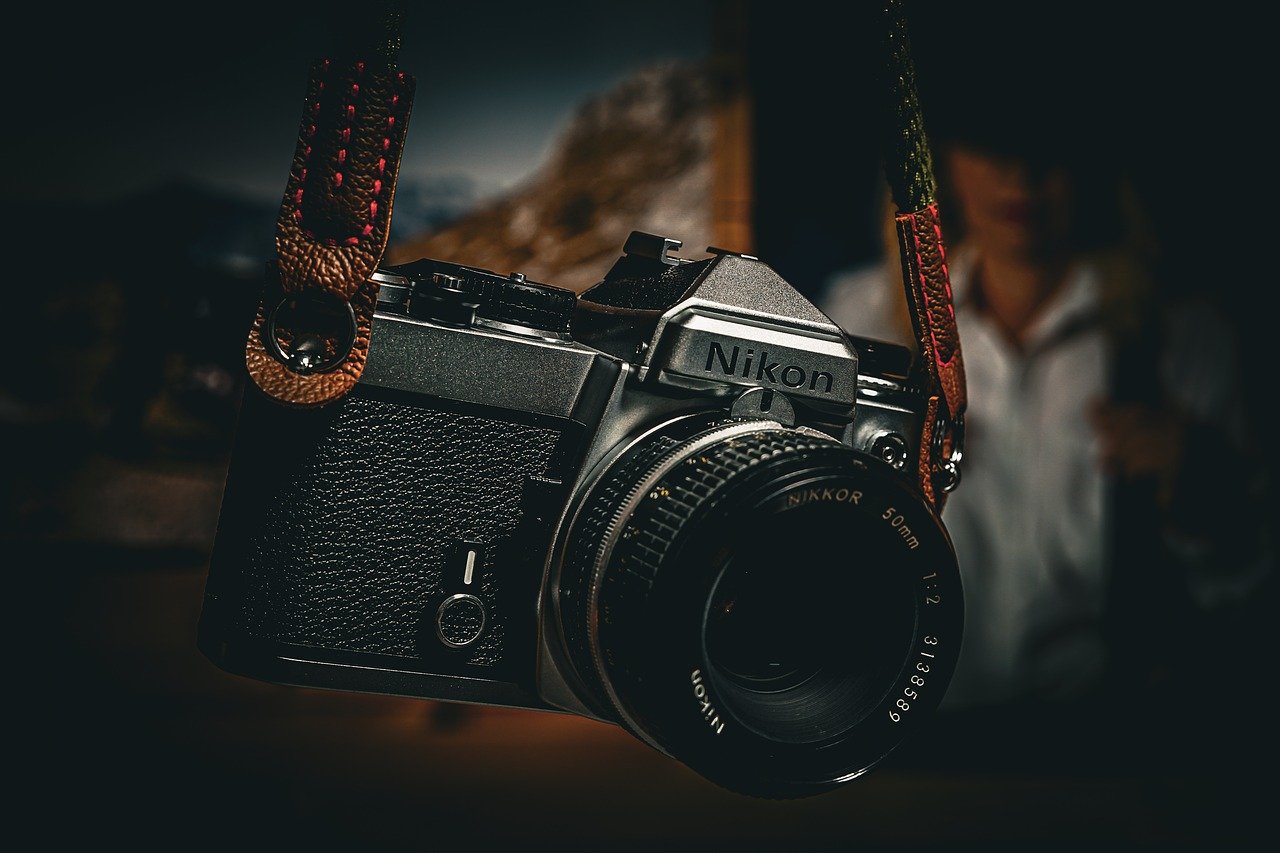
Emergency Preparedness
When venturing into the wild with your camera in hand, it's not just about capturing stunning images; it's also about being ready for the unexpected. The wilderness can be unpredictable, and as a wildlife photographer, your safety should always be your top priority. Think of emergency preparedness as your safety net—it's there to catch you when things go awry. So, what should you consider to ensure a secure photography experience? Let's dive in!
First and foremost, having a well-stocked first aid kit is essential. This kit should be tailored to your specific needs and the environment you’re shooting in. For example, if you're hiking in an area known for ticks, include tick removal tools. If you're in a region with snakes, consider adding a snake bite kit. Here’s a quick look at some must-have items:
| Item | Purpose |
|---|---|
| Adhesive Bandages | For cuts and scrapes |
| Antiseptic Wipes | To clean wounds |
| Gauze and Tape | For larger injuries |
| Emergency Blanket | To retain body heat |
| Pain Relievers | To manage discomfort |
Next, consider carrying a reliable communication device. In remote areas, cell service can be spotty or nonexistent. A satellite phone or a two-way radio can be a lifesaver in emergencies. Imagine being out in the wild, capturing the perfect shot, and suddenly finding yourself in a precarious situation. Having a way to communicate can mean the difference between a minor inconvenience and a serious crisis.
Moreover, it's wise to familiarize yourself with the local wildlife and potential hazards in the area. Understanding which animals are present and their behaviors can help you avoid dangerous encounters. For instance, knowing that bears are active in your shooting location may prompt you to carry bear spray and learn how to use it effectively. Remember, knowledge is power!
Another crucial aspect of emergency preparedness is having a solid plan of action. Before heading out, let someone know where you'll be and when you expect to return. This way, if something goes wrong, they will know where to start looking for you. Creating an itinerary can also help you stay organized and focused while you're out in the field.
Lastly, always trust your instincts. If something feels off, whether it’s the behavior of an animal or your own gut feeling, don’t hesitate to back off and reassess the situation. Your safety is paramount, and no photograph is worth risking your well-being.
- What should I include in my first aid kit?
A first aid kit should include adhesive bandages, antiseptic wipes, gauze, an emergency blanket, and pain relievers, among other items tailored to your specific needs. - How can I communicate in remote areas without cell service?
Consider using a satellite phone or a two-way radio to stay connected in areas where cell service is unreliable. - What should I do if I encounter a wild animal?
Stay calm, back away slowly, and do not approach or provoke the animal. Understanding local wildlife behavior can also help you avoid dangerous encounters.
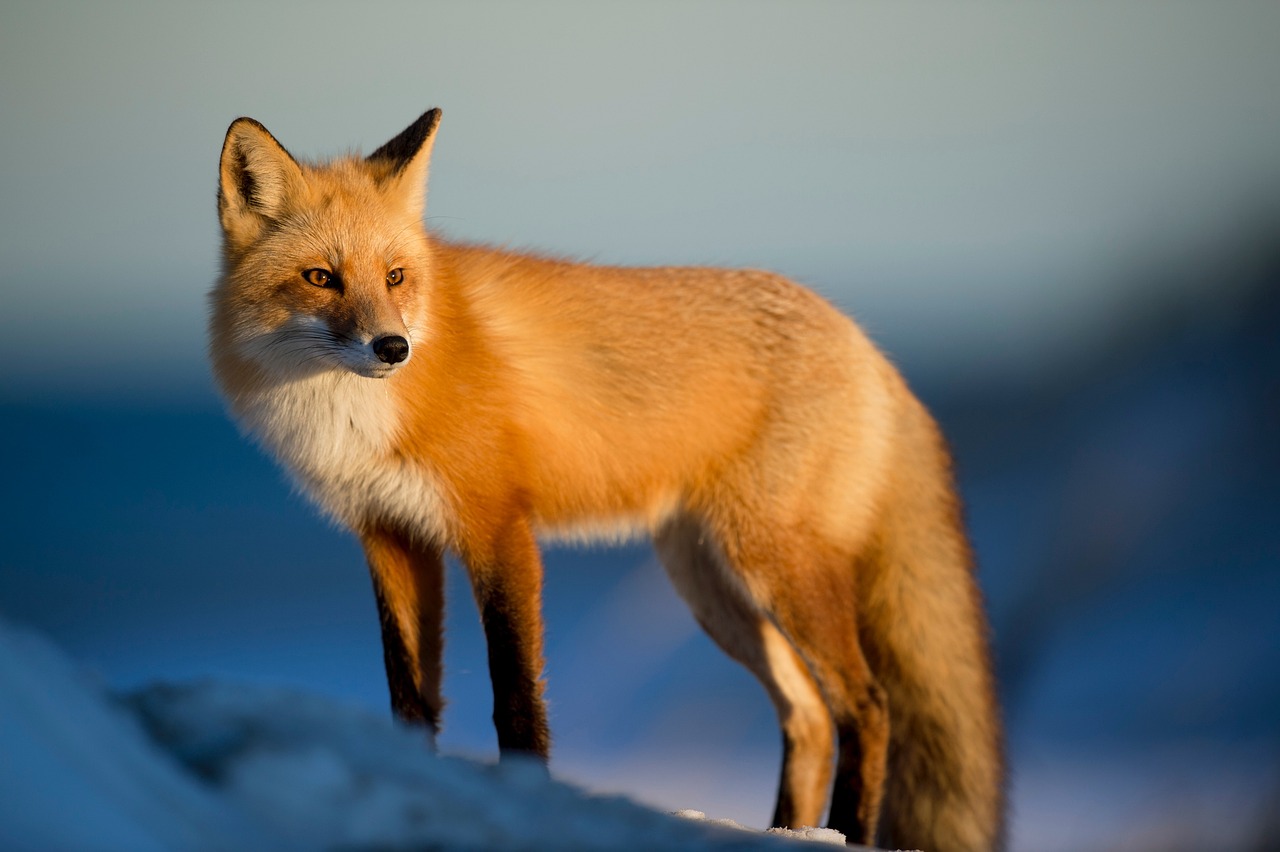
Respecting Wildlife and Their Habitats
As wildlife photographers, we have a profound responsibility to respect the creatures we capture and the environments they inhabit. It’s not just about getting that perfect shot; it’s about ensuring that our presence does not disrupt their natural behaviors or habitats. Think of it like being a guest in someone else's home. You wouldn’t want to trample through their living room or disturb their peace, right? The same principle applies to the wild.
Understanding the importance of wildlife conservation is crucial. Every species plays a role in its ecosystem, and when we interfere, we can unintentionally cause harm. For instance, approaching too closely can stress animals, disrupt their feeding, or even lead to abandonment of young. A great rule of thumb is to always observe from a distance, allowing wildlife to behave naturally. This not only protects them but also enhances your photography as you capture genuine moments.
To help you navigate this delicate balance, consider these best practices for respecting wildlife and their habitats:
- Stay on designated paths: This minimizes your impact on the environment and helps protect fragile habitats.
- Keep noise to a minimum: Loud noises can startle animals and disrupt their natural behaviors.
- Follow local guidelines and regulations: Many parks and reserves have specific rules for wildlife photography. Adhering to these not only protects wildlife but also enhances your experience.
Another significant aspect of respecting wildlife is understanding the concept of safe distances. Different species have varying thresholds for human interaction. For example, large mammals like bears or moose may require a much greater distance than smaller animals like birds. Here’s a quick reference table to help you gauge appropriate distances:
| Animal Type | Recommended Distance |
|---|---|
| Large Mammals (e.g., bears, moose) | At least 100 yards (91 meters) |
| Medium-Sized Animals (e.g., deer, coyotes) | At least 50 yards (46 meters) |
| Small Animals (e.g., rabbits, birds) | At least 25 yards (23 meters) |
Remember, these distances are not just suggestions; they are essential for the well-being of the animals and for your safety too. Getting too close can provoke defensive behaviors, which could lead to dangerous encounters. The thrill of wildlife photography should never come at the cost of safety or ethical responsibility.
Lastly, let’s talk about minimizing our environmental impact. As photographers, we often find ourselves in pristine natural areas. It’s our duty to leave these places as we found them. This means packing out everything you bring in, avoiding littering, and being mindful of where you step. Even the smallest actions can have a significant impact on wildlife habitats. By practicing Leave No Trace principles, we can ensure that future generations will also have the opportunity to experience the beauty of nature.
In conclusion, respecting wildlife and their habitats is not just a guideline; it’s a core principle that should guide every wildlife photographer’s journey. By being mindful of our actions and their consequences, we can enjoy our passion while contributing to the preservation of the natural world around us. So, the next time you’re out in the field, remember: you’re not just a photographer; you’re a steward of the environment.
Q: How can I identify signs of stress in wildlife?
A: Look for behaviors such as fleeing, hiding, or aggressive posturing. If an animal appears to be agitated or is trying to move away, it’s best to give it space.
Q: What should I do if I encounter a dangerous animal?
A: Stay calm, back away slowly, and avoid direct eye contact. Make yourself appear larger if necessary, but never run.
Q: Are there specific times of day that are better for wildlife photography?
A: Early mornings and late afternoons often provide the best light and are also prime feeding times for many animals, increasing your chances of a sighting.
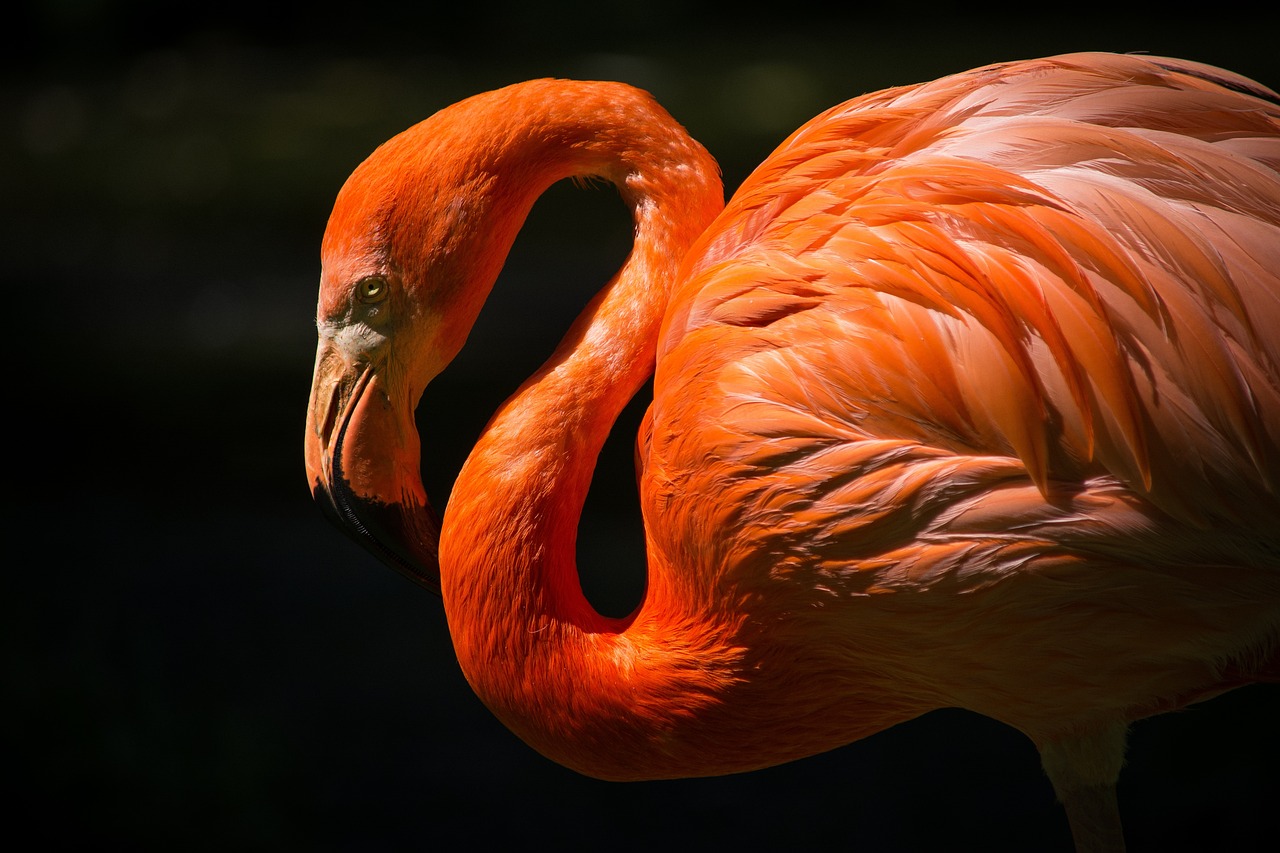
Staying at a Safe Distance
When it comes to wildlife photography, one of the most crucial aspects to consider is from the animals you wish to capture. Why is this so important? Well, for starters, many wildlife species can be unpredictable, and approaching them too closely can lead to stress or even aggression. Imagine a bear suddenly feeling threatened by your presence—now that’s a situation you definitely want to avoid!
To help you navigate these delicate encounters, it's essential to understand the recommended distances for various animals. For instance, large mammals like elephants or moose should be observed from at least 100 yards away, while smaller creatures, such as deer, might require a minimum distance of about 50 yards. Here’s a quick reference table to illustrate some common wildlife and their recommended safe distances:
| Animal | Recommended Distance |
|---|---|
| Elephants | 100 yards |
| Moose | 100 yards |
| Deer | 50 yards |
| Birds | 30 yards |
| Small Mammals | 20 yards |
But it’s not just about distance; it’s also about being aware of the animal's body language. For example, if you notice an animal exhibiting signs of agitation—like raised fur, stomping, or vocalizations—it’s a clear signal to back off, even if you’re already at the recommended distance. Think of it as a dance; you want to remain in sync with nature, respecting its rhythm and boundaries.
Moreover, using a long lens can be a game-changer in wildlife photography. It allows you to capture stunning images without encroaching on the animal's space. A lens with a focal length of 300mm or greater can help you maintain that safe distance while still getting the close-up shots you desire. This way, you can enjoy the thrill of capturing wildlife in its natural habitat without compromising your safety or that of the animals.
In addition to physical distance, consider the impact of your presence on the environment. Animals are often more sensitive to human activity than we realize. By keeping your distance, you not only ensure your safety but also help preserve the natural behaviors of wildlife. Remember, every click of the shutter should come with a sense of responsibility toward the creatures and ecosystems that make our planet so beautiful.
In conclusion, staying at a safe distance is not just a guideline; it’s a fundamental principle of ethical wildlife photography. By respecting the space of animals, you contribute to their well-being and ensure that your photography experience is rewarding and safe. So, next time you’re out in the wild, ask yourself: are you observing from a distance that respects the wildlife? If the answer is no, it might be time to adjust your approach.
- What should I do if an animal approaches me? Stay calm and slowly back away without turning your back on the animal. Make yourself look larger by raising your arms, and speak in a calm voice.
- How can I tell if an animal is stressed? Look for signs such as rapid breathing, pacing, or aggressive posturing. If you see these signs, it’s best to increase your distance.
- Are there specific times when animals are more aggressive? Yes, during mating season or when they are with their young, animals can be particularly protective and aggressive.
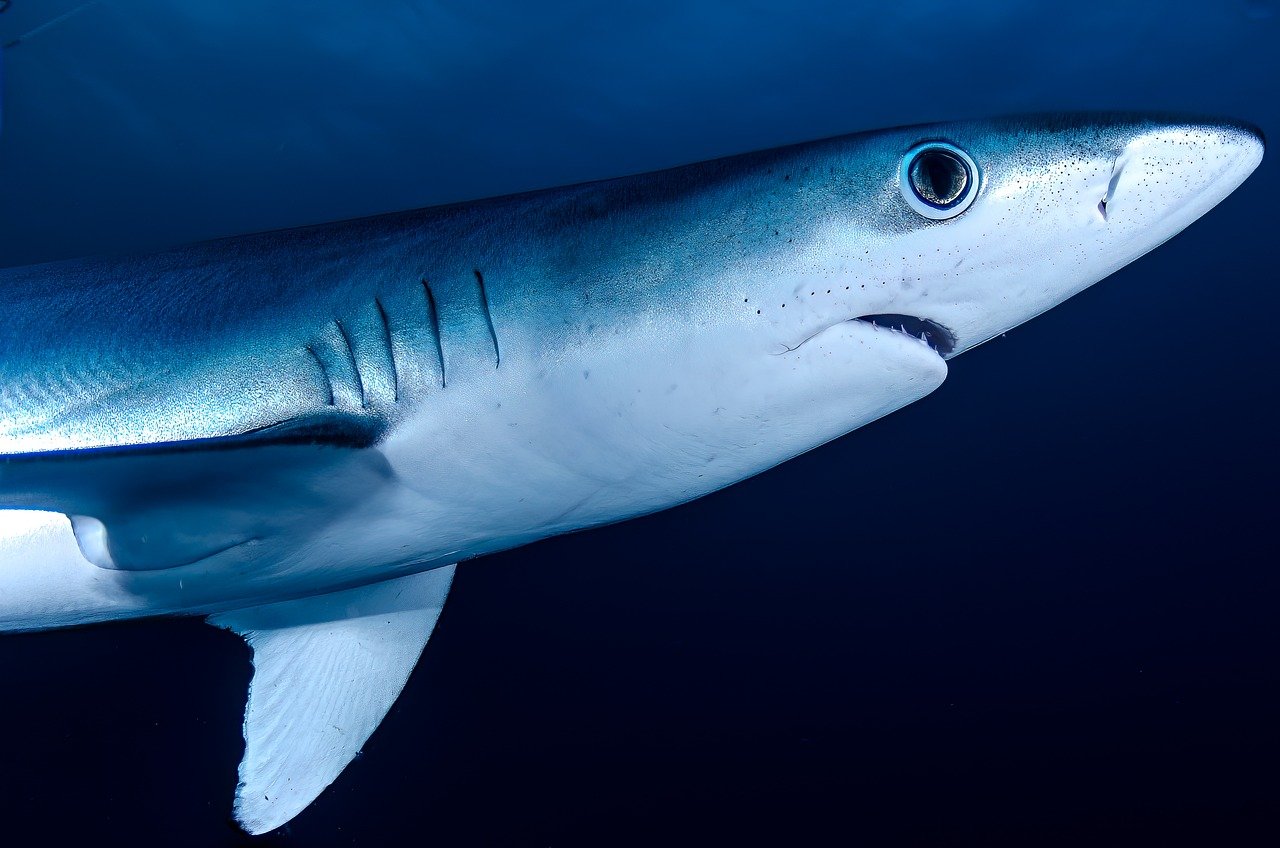
Minimizing Environmental Impact
When it comes to wildlife photography, the thrill of capturing stunning images can sometimes overshadow our responsibility toward the environment. However, being a conscientious photographer means understanding that every click of the shutter has the potential to impact the delicate ecosystems we are privileged to observe. So, how can we minimize our environmental footprint while still pursuing our passion for photography? Here are some essential strategies to consider:
First and foremost, always stick to designated trails when exploring natural habitats. Venturing off the beaten path can lead to trampling delicate vegetation and disturbing wildlife. Think of it as being a guest in someone else's home; you wouldn’t want to rearrange their furniture, right? By respecting established paths, we can enjoy the beauty of nature without causing harm.
Additionally, it’s crucial to practice the principle of Leave No Trace. This means not only picking up after ourselves but also being mindful of our actions. For instance, avoid leaving behind any trash, food scraps, or equipment that could potentially create hazards for wildlife. You can even go a step further by carrying a small trash bag to collect any litter you might encounter during your photography sessions. Every little bit counts!
Moreover, consider the impact of your presence on the wildlife you are photographing. Animals can be easily stressed by human activity, so it’s essential to maintain a respectful distance. The general rule of thumb is to stay at least 100 yards away from larger animals, such as bears and moose, and about 25 yards from smaller creatures. This distance not only keeps you safe but also allows wildlife to behave naturally, resulting in more authentic photographs.
Another effective way to minimize your environmental impact is to educate yourself about the specific habitats you are visiting. Different ecosystems have unique sensitivities, and understanding these can help you make informed decisions. For example, if you're photographing in a wetland area, be aware that stepping into the water can disrupt the breeding grounds of various species. A little research goes a long way in ensuring we’re not inadvertently causing harm.
Lastly, consider using eco-friendly photography gear. There are now many options available that are designed to be less harmful to the environment. Whether it's biodegradable cleaning supplies for your lenses or solar-powered chargers for your equipment, making the switch can significantly reduce your ecological footprint. Think of it as investing in the future of our planet—one photograph at a time.
In summary, minimizing environmental impact while engaging in wildlife photography is not just a responsibility; it’s a privilege. By adopting these practices, we can ensure that future generations will have the same opportunities to experience the beauty of nature through the lens of a camera. Remember, each photograph we take should not only capture a moment but also reflect our commitment to preserving the natural world.
- What should I do if I encounter wildlife while photographing?
Remain calm, keep your distance, and slowly back away. Avoid sudden movements or loud noises that might startle the animal.
- How can I ensure I’m not disturbing the wildlife?
Follow the recommended distance guidelines and observe animal behavior. If they seem agitated or stressed, it’s best to move further away.
- Are there specific times when it's better to photograph wildlife?
Early mornings and late afternoons are typically the best times, as animals are more active during these hours.
- What is the Leave No Trace principle?
It's a set of guidelines aimed at promoting conservation in the outdoors, encouraging individuals to minimize their impact on the environment.
Frequently Asked Questions
- What should I do if I encounter a wild animal while photographing?
If you find yourself face-to-face with a wild animal, the best course of action is to remain calm. Slowly back away without turning your back on the animal. Make sure to give it plenty of space and avoid any sudden movements. Remember, you're a guest in their home!
- How can I choose the right gear for wildlife photography?
Choosing the right gear involves considering both your safety and the quality of your shots. Invest in a sturdy camera bag, protective clothing, and suitable footwear. Don't forget to pack essential camera accessories like lens covers and rain gear to keep your equipment safe from the elements.
- What kind of protective clothing is recommended?
Look for clothing made from durable, weather-resistant materials. Long sleeves and pants can protect against scratches and bites, while camouflaged patterns can help you blend into your surroundings. Additionally, consider wearing layers to adapt to changing weather conditions.
- How do I prepare for emergencies while out in the field?
Emergency preparedness is all about planning ahead. Carry a first-aid kit, know the location of the nearest hospital, and have a reliable means of communication. It's also wise to inform someone about your plans and expected return time. Being prepared can make all the difference!
- Why is it important to respect wildlife and their habitats?
Respecting wildlife and their habitats is crucial for conservation efforts. By minimizing your impact, you help protect these ecosystems and the animals that inhabit them. Following ethical photography practices not only benefits wildlife but also enhances your experience as a photographer.
- What is the recommended distance to maintain from wildlife?
Maintaining a safe distance varies by species, but a good rule of thumb is to stay at least 100 yards away from larger animals like bears and moose. For smaller animals, 25-50 yards is usually sufficient. Always prioritize the animal's comfort and safety over getting that perfect shot!
- How can I minimize my environmental impact while photographing?
To minimize your environmental impact, stick to established trails, avoid disturbing nests or dens, and pack out all trash. Additionally, be mindful of your presence; loud noises and sudden movements can stress wildlife. Practicing Leave No Trace principles can help preserve the beauty of nature for future generations.




